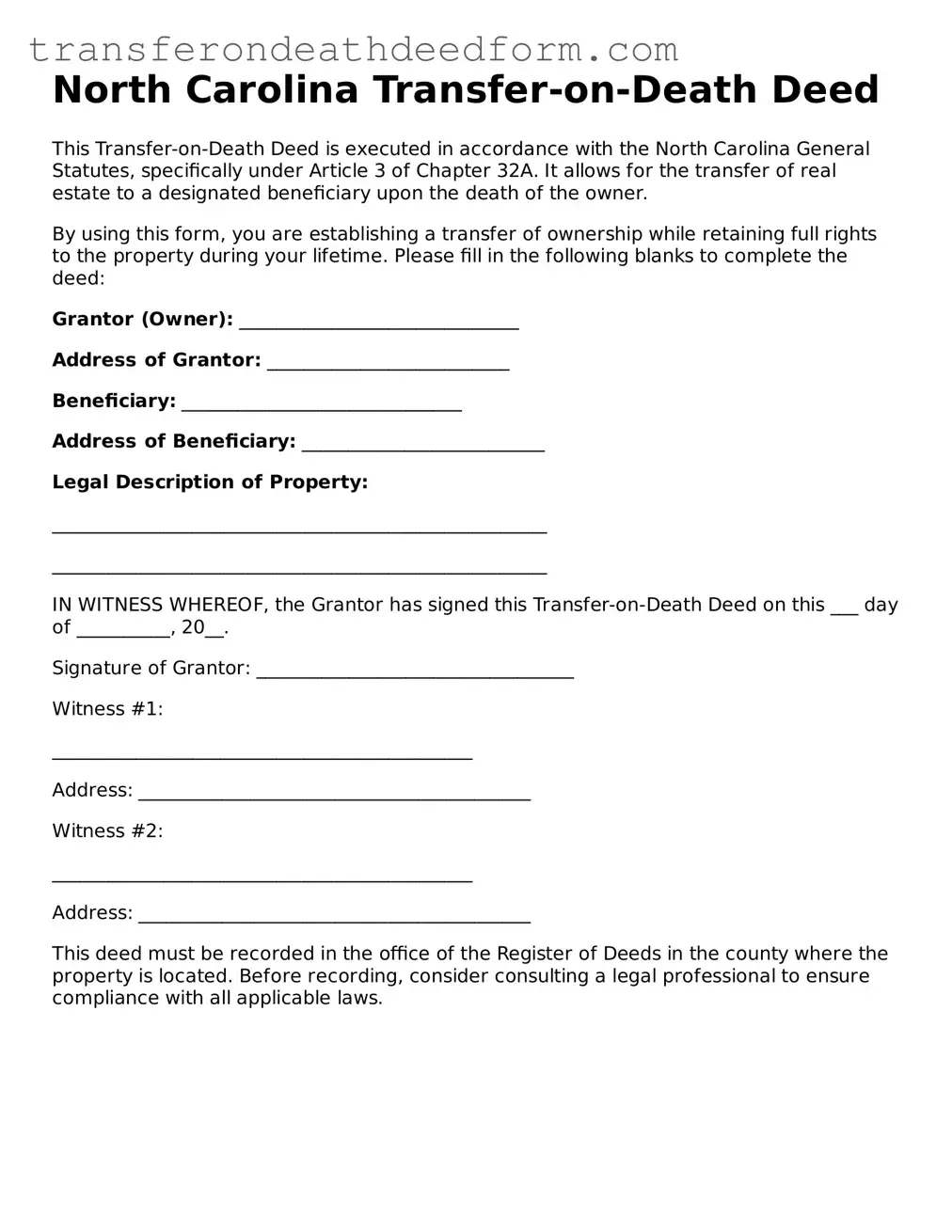North Carolina Transfer-on-Death Deed
This Transfer-on-Death Deed is executed in accordance with the North Carolina General Statutes, specifically under Article 3 of Chapter 32A. It allows for the transfer of real estate to a designated beneficiary upon the death of the owner.
By using this form, you are establishing a transfer of ownership while retaining full rights to the property during your lifetime. Please fill in the following blanks to complete the deed:
Grantor (Owner): ______________________________
Address of Grantor: __________________________
Beneficiary: ______________________________
Address of Beneficiary: __________________________
Legal Description of Property:
_____________________________________________________
_____________________________________________________
IN WITNESS WHEREOF, the Grantor has signed this Transfer-on-Death Deed on this ___ day of __________, 20__.
Signature of Grantor: __________________________________
Witness #1:
_____________________________________________
Address: __________________________________________
Witness #2:
_____________________________________________
Address: __________________________________________
This deed must be recorded in the office of the Register of Deeds in the county where the property is located. Before recording, consider consulting a legal professional to ensure compliance with all applicable laws.
